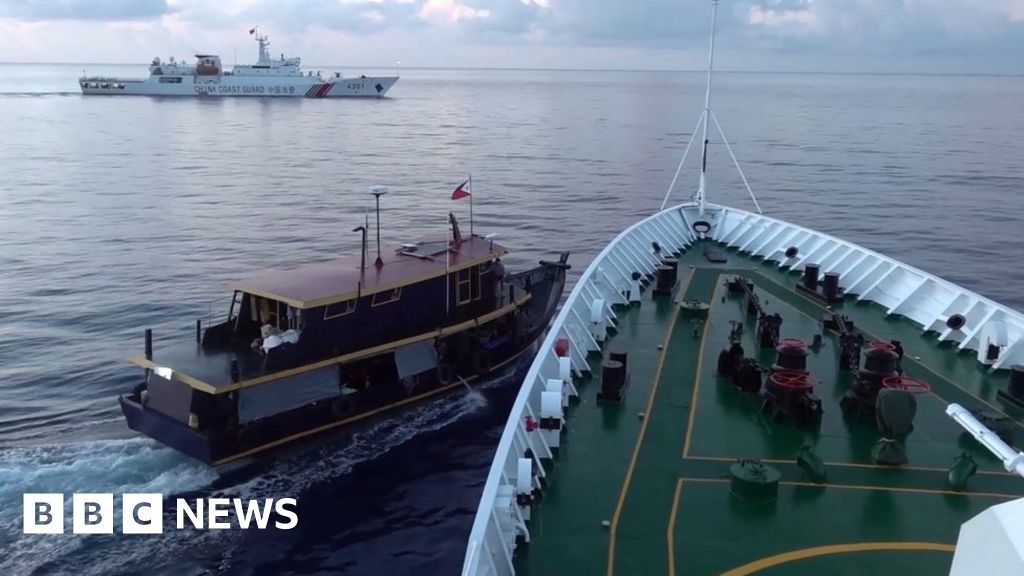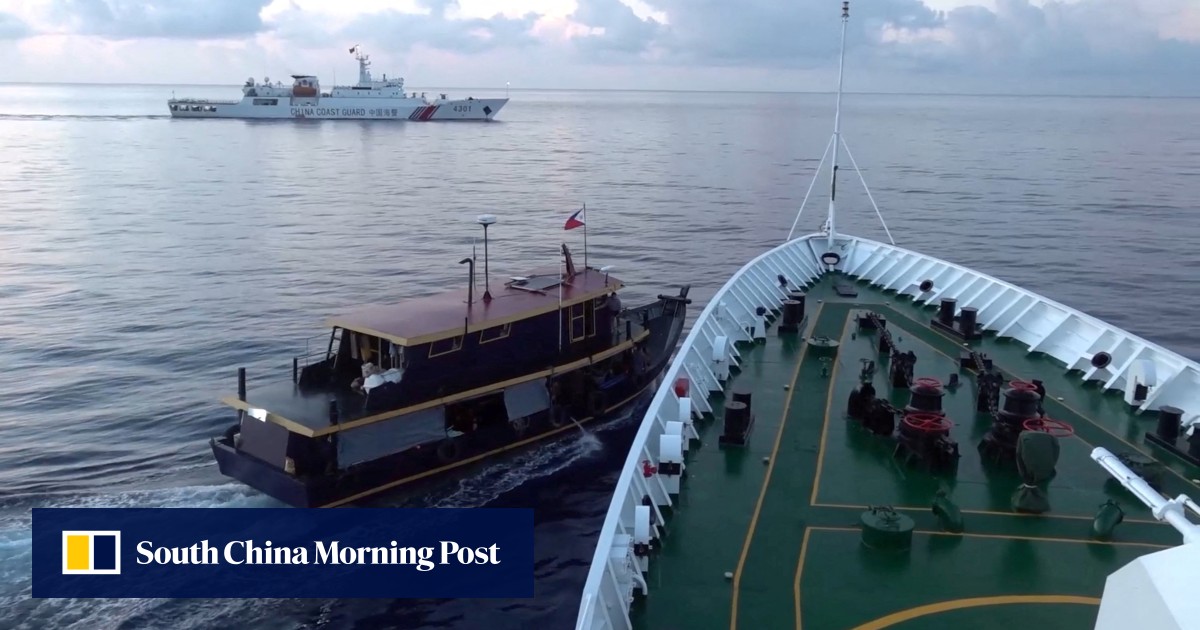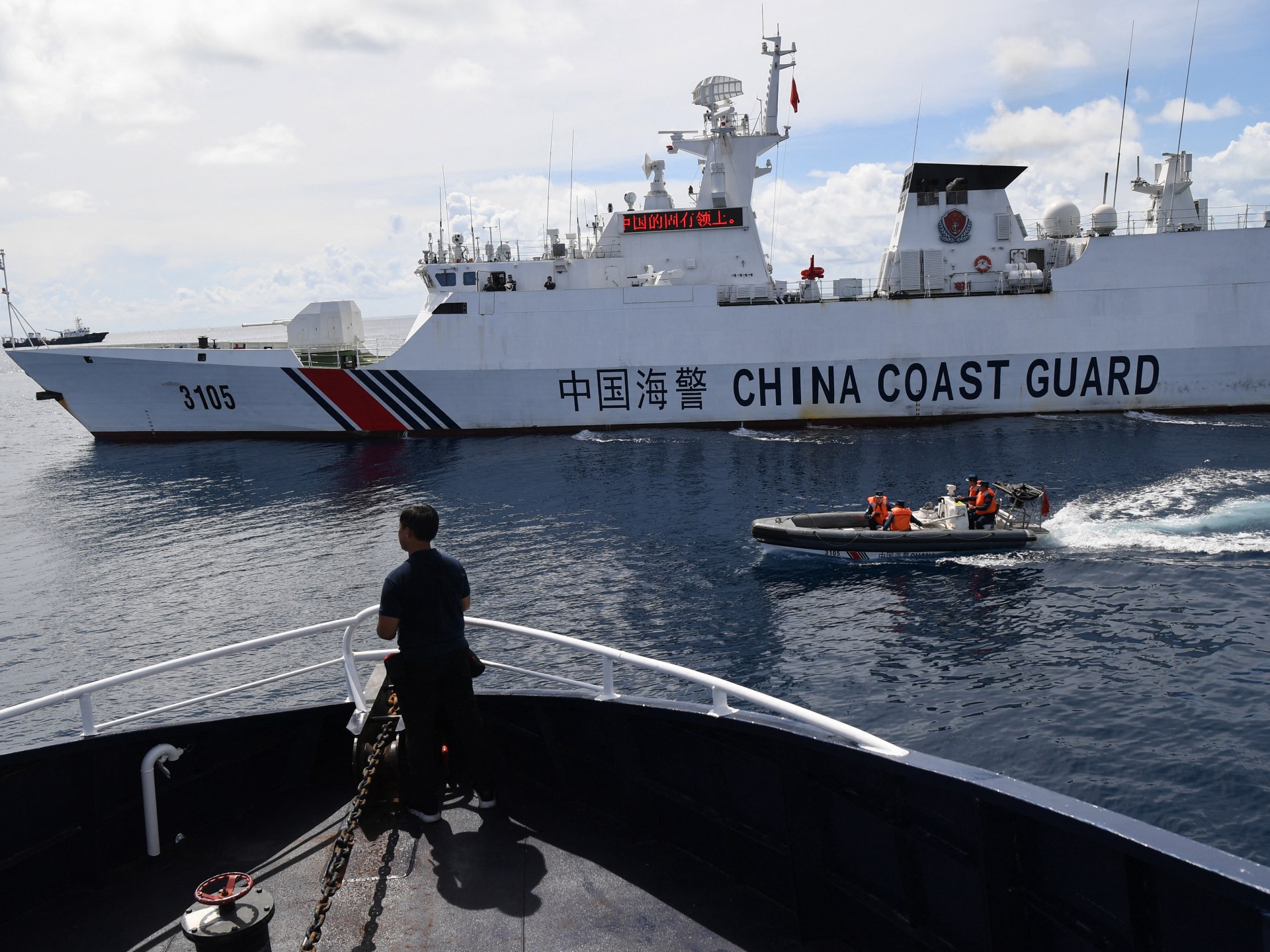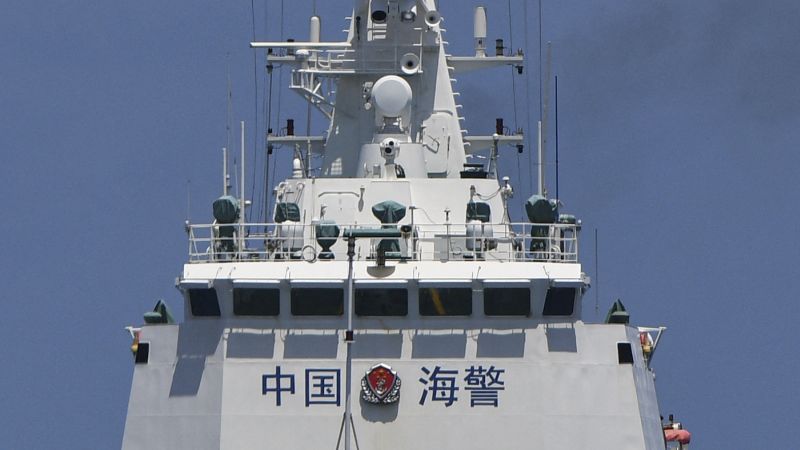The South China Sea has long been a hotbed of territorial disputes, with multiple nations staking their claims to this strategically huge waterway. The Philippines and China have been at odds over the South China Sea for decades, but recent developments have brought their disputes into the international spotlight.

Also Read: Elon Musk Offers Wikipedia $1 Billion to Change its Name to Dickipedia
Recent incidents in the South China Sea have a new chapter in the ongoing dispute between the Philippines and China.
On a recent Sunday, a collision occurred between a Philippine Coast Guard ship and a Chinese maritime militia vessel near a sensitive reef known as Second Thomas Shoal or Ayungin Shoal.
This incident was not an isolated one but rather part of a pattern of confrontations. It has set the stage for a conflict that could draw in not only these two nations but also the United States, further complicating the situation.
One change in this ongoing conflict is the Philippines’ adoption of an “assertive transparency campaign.” The Philippine government has used media attention to shed light on China’s actions in the South China Sea.
This campaign involves sharing videos and images of encounters in these disputed waters with local and international media outlets.
By doing so, they aim to expose what they view as China’s “brute force” in asserting control over waters that Manila claims as its own.
China, in response to this new approach, initially appeared taken aback. The Philippines’ seemed to deter China’s activities temporarily.
The ability to shine a spotlight on these maritime confrontations put a dent in China’s ambitions in the South China Sea, allowing the Philippines to make successful resupply runs to its outpost in Second Thomas Shoal, where the aging World War II-era ship, Sierra Madre, is grounded.
Also Read: Foxconn: China Conducts Tax Audit, Land Use Probe
This ship serves as a symbol of the Philippines’ territorial claims. The Sierra Madre, grounded on the reef in 1999, houses a small contingent of Philippine marines who have been maintaining a lonely watch aboard the deteriorating vessel.
Over the years, the ship has been deteriorating, and it is reaching a point where its structural integrity is severely compromised.
This situation is crucial to understanding the tensions in the South China Sea. It raises questions about what happens if the Sierra Madre finally succumbs to the sea.
The Philippines’ foreign policy underwent a shift following the election of President Ferdinand Marcos Jr. His administration has reversed the policies of his predecessor, Rodrigo Duterte, who leaned toward Beijing.
President Marcos Jr. has embraced closer ties with the United States and has taken a more vocal stance against China’s incursions into the Philippines’ Exclusive Economic Zone (EEZ). This shift has played a crucial role in the recent escalations.
Sources in Manila have suggested that the Philippines’ resupply missions to the Sierra Madre have included more than just food and water.
Also Read: Argentina Election: Javier Milei and Sergio Massa Head for Run-off Vote
There are claims that construction materials like cement and scaffolding have been transported to the site.
The purpose of these materials is to shore up the decaying ship. The Philippines seems committed to preserving its presence on Ayungin Shoal, and this includes the structural integrity of the Sierra Madre.
The recent incidents in the South China Sea, particularly the confrontations between China and the Philippines, have raised the risk of a hot conflict.
Both sides have lodged protests over the collisions. China accuses the Philippines of provocation, while Manila claims these incidents were intentional strikes. This ongoing face-off could damage trust and affect the code of conduct talks in the South China Sea.
The United States plays a main role in the South China Sea disputes, given its longstanding treaty alliance with the Philippines.
Under the 1951 Mutual Defense Treaty, the United States is obligated to defend the Philippines if its forces, including its coastguard, come under armed attack in the South China Sea.
This commitment was reaffirmed by the U.S. State Department following the recent collisions. The U.S. has a interest in maintaining peace and stability in the region, and an escalation could draw it into a conflict with China.
Also Read: Switzerland: Right-Wing Swiss People’s Party to Win Elections




/cloudfront-us-east-2.images.arcpublishing.com/reuters/J35PLM3W7VOVDCZAWX266PUKDY.jpg)


















